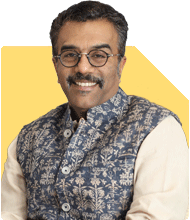Ramalingam Kalirajan |2430 Answers |Ask -Follow
Mutual Funds, Financial Planning Expert - Answered on May 02, 2024
He has an MBA in finance from the University of Madras and is a certified financial planner.
He is the director and chief financial planner at Holistic Investment, a Chennai-based firm that offers financial planning and wealth management advice.... more

Hi sir, I'm 25y old. I have a salary of 55k per month I've started investing in May 2022 in mutual funds through SIP for long term 25-30years. Right now I've 60k of invested amount in MF Portfolio doing SIP of 7k per month. I've an emergency fund in FD of 60k and I've health and term insurance for me and family. I also have a personal loan of 6lakh which I took in December 2022. I'm paying 20k monthly for a loan. Still I need to pay 6.22 lakh in 3 years. I'm also thinking of starting investing 10k per month in chit funds for 2 years(trusted chit fund) assuming an annualized return of 15%. My monthly expenses excluding loan and SIP in MF is 23k. My MF Portfolio: Parag Parikh flexi cap - 2.5k Nippon small cap - 2k Axis bluechip - 2k Navi nifty50 index fund -500 Can you please review my MF Portfolio and guide me how I can clear my debt of 6.22 lakh as soon as possible.
Now, about that loan. It's understandable to want to clear it as soon as possible. Have you thought about increasing your monthly payments towards it? It might ease the burden in the long run.
Regarding chit funds, while they offer potential returns, are you sure about their reliability and transparency? It's crucial to be cautious when exploring new investment avenues.
Remember, a Certified Financial Planner can offer personalized advice tailored to your goals and circumstances. With discipline and strategic planning, you'll be on track to financial freedom sooner than you think!
You may like to see similar questions and answers below
Ramalingam Kalirajan |2430 Answers |Ask -Follow
Mutual Funds, Financial Planning Expert - Answered on May 12, 2024
Ramalingam Kalirajan |2430 Answers |Ask -Follow
Mutual Funds, Financial Planning Expert - Answered on May 08, 2024
Ramalingam Kalirajan |2430 Answers |Ask -Follow
Mutual Funds, Financial Planning Expert - Answered on May 17, 2024
Ramalingam Kalirajan |2430 Answers |Ask -Follow
Mutual Funds, Financial Planning Expert - Answered on May 17, 2024
Ramalingam Kalirajan |2430 Answers |Ask -Follow
Mutual Funds, Financial Planning Expert - Answered on May 17, 2024
Ramalingam Kalirajan |2430 Answers |Ask -Follow
Mutual Funds, Financial Planning Expert - Answered on May 17, 2024
Ramalingam Kalirajan |2430 Answers |Ask -Follow
Mutual Funds, Financial Planning Expert - Answered on May 17, 2024
Ramalingam Kalirajan |2430 Answers |Ask -Follow
Mutual Funds, Financial Planning Expert - Answered on May 17, 2024
Chocko Valliappa |233 Answers |Ask -Follow
Tech Entrepreneur, Educationist - Answered on May 17, 2024
Chocko Valliappa |233 Answers |Ask -Follow
Tech Entrepreneur, Educationist - Answered on May 17, 2024
Chocko Valliappa |233 Answers |Ask -Follow
Tech Entrepreneur, Educationist - Answered on May 17, 2024
Chocko Valliappa |233 Answers |Ask -Follow
Tech Entrepreneur, Educationist - Answered on May 17, 2024





















